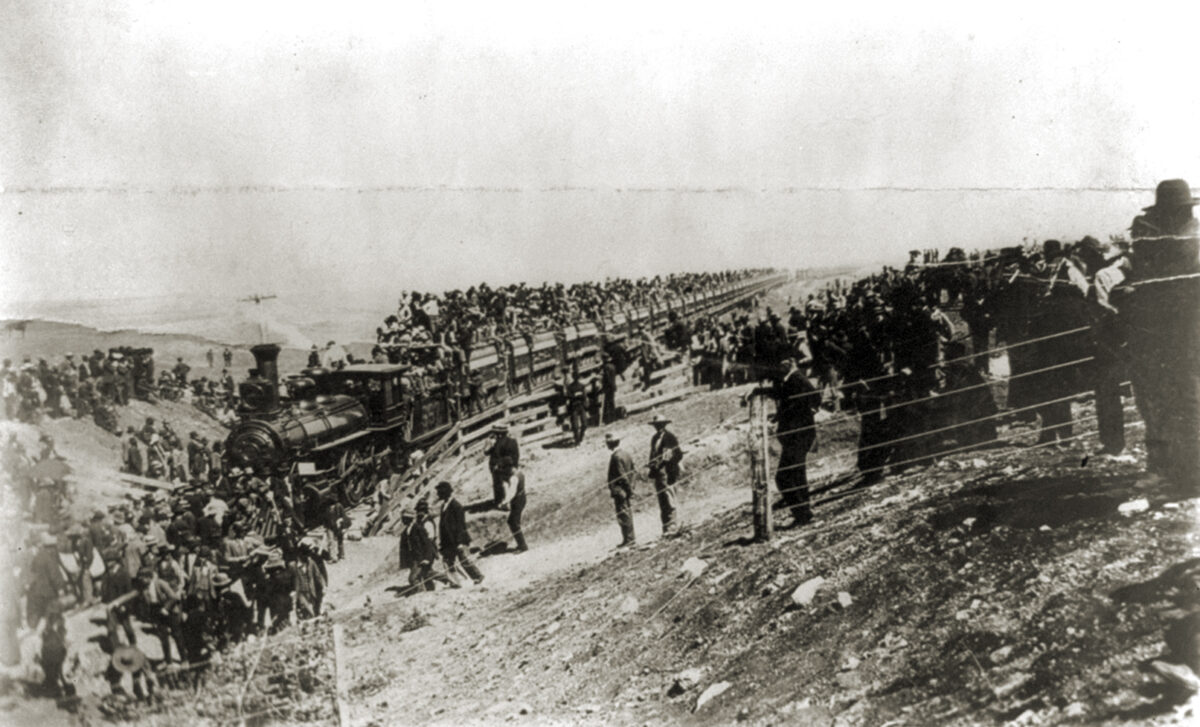Beside the heavily laden train pictured above in Caldwell, Kan., on Sept. 16, 1893, waits a throng of hopeful men and women tellingly penned in by barbed wire. These late-blooming “Boomers” are gathered on the northern border of the Cherokee Strip, in the north-central section of what today is known as Oklahoma. The Cherokee Strip land run was the fourth and largest of seven such land runs organized by the United States government between 1889 and ’95 to dole out land seized from various tribes and opened to homesteaders.
Mention the Oklahoma land runs, and the 1889 image that springs to mind is a tide of adventurers and families racing at breakneck speed on horseback and driving wagons of every description into what appears barren, unused wilderness. The train tracks in the photo above, though, indicate the territory was far from unsettled. In the case of the Cherokee Strip, the land was of course owned by the Cherokee Nation, which had been earning a tidy profit leasing grazeland to cattle ranchers. With mounting pressure from would-be settlers, though, the federal government hastily arranged a buyout, strong-arming the Cherokee into selling their land at bargain prices.
To those who know their Oklahoma folklore the train may seem perfectly relevant. The first person to file a land claim during an Oklahoma land run was Nannita Daisey. The way she told the story, amid the 1889 land run she leaped from the cowcatcher at the front of a slow-moving locomotive, staked her claim and then reboarded before the train passed her by. In 2007 townspeople in Edmond, Okla., unveiled a statue of Daisey in mid-leap from the cowcatcher. While her tale may seem apocryphal, a close look at the front of the train in the photo above reveals several men on standby, perhaps preparing to mirror Daisey’s daring strategy.

